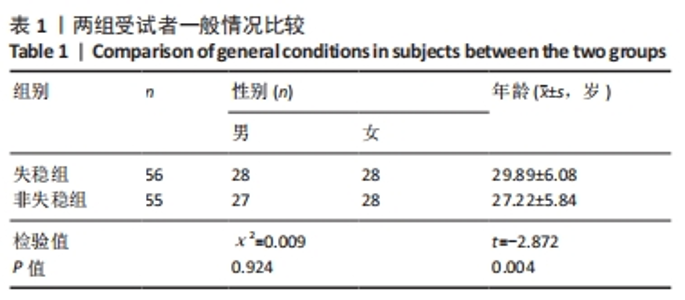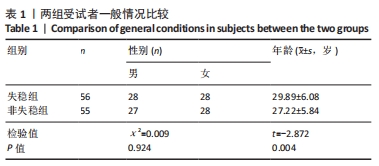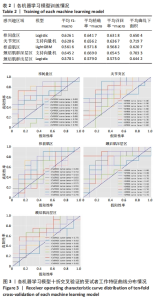[1] ALIZADA M, LI RR, HAYATULLAH G. Cervical instability in cervical spondylosis patients: significance of the radiographic index method for evaluation. Orthopade. 2018;47(12):977-985.
[2] ZHUANG L, WANG L, XU D, et al. Association between excessive smartphone use and cervical disc degeneration in young patients suffering from chronic neck pain. J Orthop Sci. 2021;26(1):110-115.
[3] 路广琦,庄明辉,常晓娟,等.在读医学硕博研究生颈椎失稳的相关表现及其生活习惯分析[J].颈腰痛杂志,2023,44(3):316-319.
[4] 徐铭康,王庆甫,张栋,等.青少年颈痛患者颈椎失稳特点与生活习惯的相关性分析[J].中国骨伤,2018,31(10):916-921.
[5] LAMBIN P, RIOS-VELAZQUEZ E, LEIJENAAR R, et al. Radiomics: Extracting more information from medical images using advanced feature analysis. Eur J Cancer. 2012;48(4):441-446.
[6] LI G, LI L, LI Y, et al. An MRI radiomics approach to predict survival and tumour-infiltrating macrophages in gliomas. Brain. 2022;145(3): 1151-1161.
[7] YU Y, HE Z, OUYANG J, et al. Magnetic resonance imaging radiomics predicts preoperative axillary lymph node metastasis to support surgical decisions and is associated with tumor microenvironment in invasive breast cancer:A machine learning, multicenter study. EBioMedicine.2021;69:103460.
[8] HOLZINGER A, HAIBE-KAINS B, JURISICA I. Why imaging data alone is not enough:AI-based integration of imaging,omics,and clinical data.Eur J Nucl Med Mol Imaging. 2019;46(13):2722-2730.
[9] WHITE AA 3rd, JOHNSON RM, PANJABI MM, et al. Biomechanical analysis of clinical stability in the cervical spine. Clin Orthop Relat Res. 1975;(109):85-96.
[10] 周振,沈浮,陆海迪,等.基于高分辨T2WI的影像组学中不同分割方法对直肠癌术前T分期的影响[J].中国医学计算机成像杂志, 2021,27(3):225-230.
[11] LI Y, HUANG X, XIA Y, et al. Value of radiomics in differential diagnosis of chromophobe renal cell carcinoma and renal oncocytoma. Abdom Radiol (NY). 2020;45(10):3193-3201.
[12] FENG ST, JIA Y, LIAO B, et al. Preoperative prediction of microvascular invasion in hepatocellular cancer: a radiomics model using Gd-EOB-DTPA-enhanced MRI. Eur Radiol. 2019;29(9):4648-4659.
[13] 姚帅君,闫敬来,杜彩凤,等.基于集成学习构建围绝经期综合征中医智能诊断模型[J].中医杂志,2023,64(6):572-580.
[14] RÖIJEZON U, JULL G, DJUPSJÖBACKA M, et al. Deep and superficial cervical muscles respond differently to unstable motor skill tasks. Hum Mov Sci. 2021;80:102893.
[15] RÖIJEZON U, BJÖRKLUND M, BERGENHEIM M, et al. A novel method for neck coordination exercise--a pilot study on persons with chronic non-specific neck pain. J Neuroeng Rehabil. 2008;5:36.
[16] STEILEN D, HAUSER R, WOLDIN B, et al. Chronic neck pain:making the connection between capsular ligament laxity and cervical instability. Open Orthop J. 2014;8:326-345.
[17] 路广琦,庄明辉,常晓娟,等.青年颈椎失稳临床症状及影像学表现探讨[J].中国骨伤,2022,35(12):1148-1153.
[18] BI WL, HOSNY A,SCHABATH MB, et al. Artificial intelligence in cancer imaging:Clinical challenges and applications. CA Cancer J Clin. 2019; 69(2):127-157.
[19] KANN BH, HOSNY A, AERTS HJWL. Artificial intelligence for clinical oncology. Cancer Cell. 2021;39(7):916-927.
[20] 刘再毅,石镇维.医学影像人工智能:进展和未来[J].国际医学放射学杂志,2023,46(1):1-4.
[21] LAMBIN P, LEIJENAAR RTH, DEIST TM, et al. Radiomics:the bridge between medical imaging and personalized medicine. Nat Rev Clin Oncol. 2017;14(12):749-762. |



